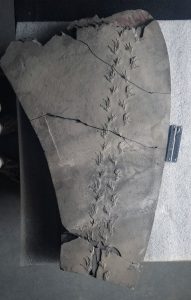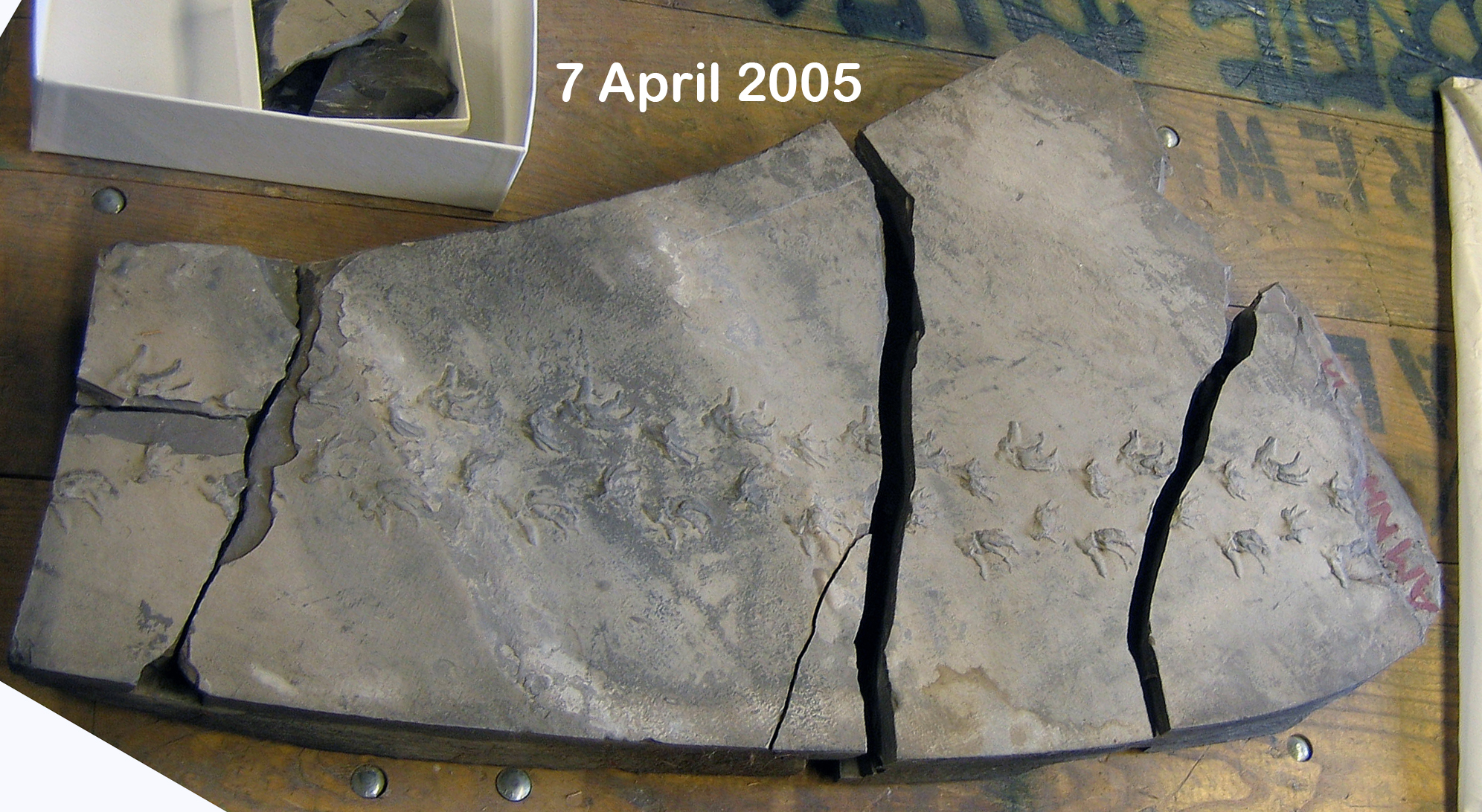
TUSCALOOSA, Ala. — In the world of paleontology, mysteries abound. Apart from questions about their makers, fossils sometime create their own mysteries after they are collected
The 2016 University of Alabama Press book, “Footprints in Stone: Fossil Traces of Coal-Age Tetrapods,” helped solve a mystery at the American Museum of Natural History, AMNH, in New York City.
The book was co-written by Dr. Ronald J. Buta, UA professor of astronomy, and Dr. David C. Kopaska-Merkel, section chief for Petroleum Systems and Technology with the Geological Survey of Alabama, which is based in Tuscaloosa.
Carl Mehling, senior museum specialist at AMNH, had worked to identify some unknown specimens from an unlabeled crate. His only clue was the newspaper used to cushion the specimens, but when he got a copy of “Footprints in Stone,” he read that a paleontologist with the museum collected similar specimens in January 1930.
“I was immediately thrilled because this promised to help solve a mystery I first became aware of in 2005,” Mehling wrote in an email to Buta and Kopaska-Merkel in October 2017 after reading the book.
The newspapers with the specimens were from the time of initial discovery, which inspired Mehling to continue digging. He found documentation that proved at least three of the specimens were associated with the Galloway No. 11 underground coal mine near Carbon Hill – which Buta and Kopaska-Merkel mention in the book and the place where tracks were first discovered in Alabama.
In the 1920s, workers at the Galloway No. 11 Mine reported seeing fossil animal footprints, or trace fossils, preserved in the rock layers above the coal seam they were mining. The animals that left the footprints were a mystery because no skeletal remains were found, making it difficult to know what they might have looked like.
Nevertheless, the discovery was considered significant enough that the mining company contacted not only professionals in Alabama, but also the American Museum of Natural History AMNH in New York, where the footprints attracted the attention of paleontologist George Gaylord Simpson, who worked for the museum for three decades.
Simpson selected 14 large slabs of tracks to be shipped to New York. Modern estimates place them at 310-315 million years old.
Alabama trace fossils received little study until 1999, when tracks were found by amateur fossil collectors in the spoil piles of an active surface coal mine, the Union Chapel Mine, near Jasper, 23 miles east of Carbon Hill. The discovery renewed interest in the ancient Walker County footprints and led Buta and Kopaska-Merkel to publish “Footprints in Stone.”
The book tells the story of the discovery of fossil tracks at the Union Chapel Mine and of the mine’s preservation by the state of Alabama as the Steven C. Minkin Paleozoic Footprint site. The book also recounts the discovery in 2011 of a second prolific fossil trackway site, the Crescent Valley Mine, located only a quarter of a mile from the former entrance to the Galloway No. 11 Mine.
The retrieval of Simpson’s slabs after having been lost for so many years is an exciting development in the history of fossil collecting in Alabama. The Simpson slabs are an important part of Alabama’s heritage, and their re-discovery now allows them to be used to further study life during the coal age, said Buta and Kopaska-Merkel.
“I am absolutely thrilled to have reunited these [Simpson’s] specimens with their data,” Mehling said in his email. “And I love the serendipitous path that took me there.”
Contact
Adam Jones, UA communications, 205-348-4328, adam.jones@ua.edu
Source
Dr. Ronald J. Buta, 205-310-9062, rbuta@ua.edu; Dr. David C. Kopaska-Merkel, 205-247-3695, davidkm@gsa.state.al.us
